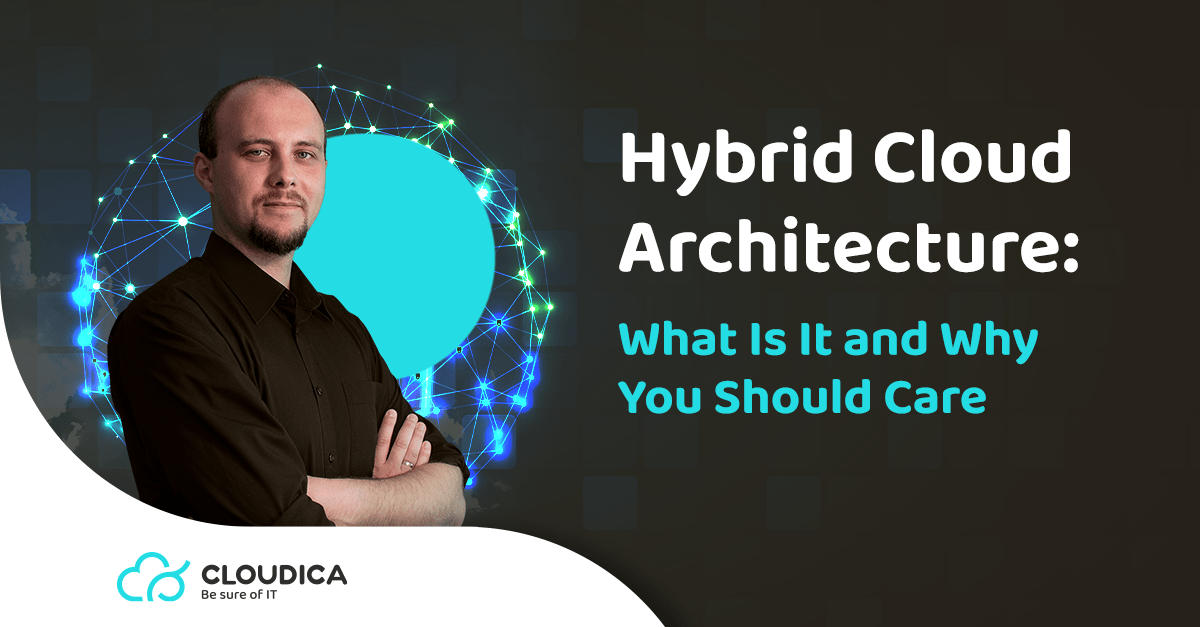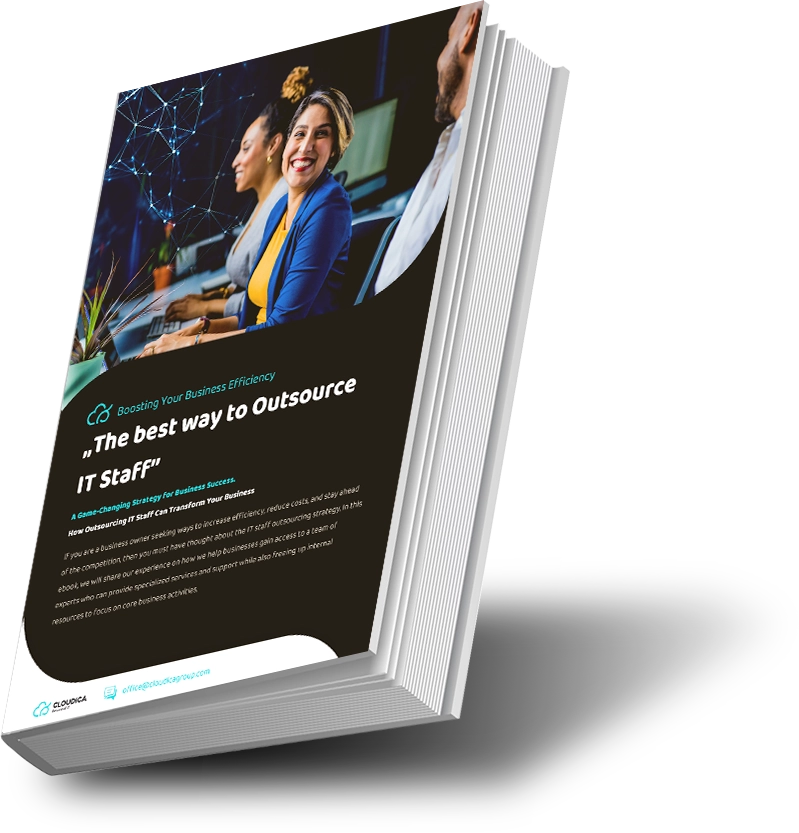Cloud deployment has become so confusing even smart techies like yourself can have trouble understanding it. Terms like hybrid cloud computing, clouds, multiple clouds, cloud distribution, and hyper-converged infrastructures are often used interchangeably, causing even more confusion. So, why is this concept so unclear? If you’re unsure about the hybrid cloud and how it affects your system, don’t worry, you’re not alone. Understanding the hybrid cloud doesn’t happen by itself.
What is a Hybrid Cloud?
In simple terms, a hybrid cloud refers to an integrated infrastructure model that combines both public and private cloud environments. It allows you to leverage the advantages of both cloud types, ensuring flexibility, scalability, enhanced security, and cost optimization. With a hybrid cloud setup, you have the flexibility to choose where to deploy your applications and workloads based on specific requirements. This flexibility allows you to optimize resource allocation, prioritize critical workloads, and maintain control over sensitive data.
Hybrid Cloud vs. Multi-cloud: What’s the Difference?
People often confuse hybrid cloud and multi-cloud since both involve multiple cloud instances and services. However, there is a significant difference between the two. A hybrid or cloud provider is a solution that combines public and private clouds, while a multi-cloud usually includes multiple publicly accessible clouds, potentially involving virtual or physical networks. The different parts of the hybrid cloud work together in harmony.
Key Features and Benefits
The hybrid cloud offers several key features that distinguish it from other cloud models, providing you with unique advantages. By seamlessly integrating public cloud storage and private cloud environments, the hybrid cloud enables you to achieve flexibility, scalability, and enhanced security.

Flexibility:
With a hybrid cloud setup, you have the flexibility to choose where to deploy your applications and workloads, either on-premises or in data centers, based on specific requirements. This flexibility allows you to optimize resource allocation, prioritize critical workloads, and maintain control over sensitive data. For example, you can host critical applications and sensitive data both on-premises in private cloud infrastructure for control and compliance purposes, while utilizing the public cloud infrastructure for less sensitive workloads or to handle peak demands.
Scalability:
Hybrid cloud environments provide scalability by allowing you to scale your resources dynamically. You can easily handle fluctuating workloads by using multiple clouds and seamlessly extending your on-premises cloud infrastructure to the public cloud during peak demand while relying on the private cloud for regular operations. This scalability ensures that you can meet your computing needs without the need for excessive infrastructure investments on-premises alone.
Enhanced Security:
By leveraging a combination of public clouds and private clouds, you can implement robust security measures to protect your sensitive data. Critical applications and sensitive information can be stored in the private cloud, while non-sensitive workloads can be deployed in the public cloud. This segregation of private and public cloud storage resources allows you to implement different security protocols based on the sensitivity of the data and compliance requirements.
What are the most common uses of hybrid clouds?
The most common uses of hybrid cloud setups and clouds can vary depending on your specific needs and requirements. However, there are several common use cases where the hybrid cloud model proves to be particularly beneficial. Some of the most common uses of hybrid cloud architecture and clouds include:
Data Backup and Disaster Recovery:
You can utilize hybrid clouds for data backup and disaster recovery purposes. You can store critical data and applications in your virtual private network or cloud infrastructure while replicating and backing up this data to the public cloud. In the event of a disaster or system failure, you can quickly recover your data and restore operations by leveraging the resources and scalability of virtual private networks and the public cloud.
Bursting and Scalability:
Hybrid clouds provide you with the ability to handle sudden spikes in demand and scale your cloud resources up as needed. During peak periods, when the workload exceeds the capacity of your private cloud, you can seamlessly “burst” into the public cloud, leveraging its elastic nature and extensive resources to meet the increased demand. This flexibility allows you to maintain optimal performance and user experience while optimizing costs during regular operations.
Development and Testing Environments:
Hybrid clouds are commonly used for development and testing purposes. You can create and manage your development and testing environments in the public cloud, taking advantage of its on-demand resources and scalability. Once the development and testing phases are complete, you can move the applications and workloads back to the premises data center or the private cloud for production deployment, ensuring data security and control.
Compliance and Security Requirements:
In industries with strict compliance and security regulations, hybrid clouds offer a way to meet these requirements effectively. You can keep sensitive data and critical applications within the private cloud on-premises infrastructure, ensuring adherence to specific security protocols and compliance standards. Non-sensitive workloads or less critical data can be stored in the public cloud, taking advantage of its cost-efficiency and scalability.
Geographic Data Distribution:
Hybrid clouds are also used by many organizations for distributing data across different geographic regions. You can keep a copy of your data in a private cloud within a specific region for compliance or performance reasons while using the public cloud to distribute the data to other regions where it can be accessed by users or applications. This hybrid environment allows for efficient data access and reduced latency while maintaining control over the primary data.
Cost Optimization:
Hybrid clouds enable you to optimize costs by leveraging the benefits of both public and private clouds. You can deploy non-sensitive workloads in the public cloud, taking advantage of its pay-as-you-go pricing model and avoiding unnecessary infrastructure investments. At the same time, critical applications and sensitive data can be kept in the private cloud to ensure data security and control while optimizing costs in the long run.
These are just a few examples of the most common uses of hybrid clouds. Ultimately, the specific use cases for hybrid clouds depend on your unique needs, priorities, resources, and challenges. By carefully assessing your requirements resources and goals, you can tailor your hybrid cloud deployment to suit your specific needs and achieve the desired outcomes.
Considerations for Hybrid Cloud Adoption
While the hybrid cloud solution offers numerous benefits, there are certain factors you should consider before adopting this model. Let’s address some common questions you may have about hybrid cloud systems:
What areas we should investigate in our company before considering a hybrid cloud?
Before adopting a hybrid cloud model, several factors should be considered. First, an assessment of the organization’s current infrastructure, applications, and data should be conducted to identify compatibility and integration challenges. Second, security and compliance requirements must be carefully evaluated to ensure adequate protection of sensitive data across both public and private cloud environments. Third, the scalability and performance needs of the organization should be considered to determine if a hybrid cloud can effectively meet these requirements. Additionally, factors such as cost, vendor lock-in, and management complexity should be taken into account to make an informed decision about adopting a hybrid cloud model.
What are real-life examples of hybrid clouds?
Real-life examples of how hybrid clouds work can be seen in organizations that utilize both private and public clouds for critical applications and sensitive data while leveraging public clouds for non-sensitive workloads or to handle peak demands on data centers. For instance, a healthcare provider may store patient records and confidential information on a private cloud, while utilizing the public cloud for web applications and non-sensitive data storage.
What are hybrid cloud solutions?
Hybrid cloud solutions encompass a range of technologies, tools, and services that enable the integration of data deployment options and management of public and private cloud environments. These solutions facilitate seamless data and application mobility while ensuring security and control of on-premises and off-premises infrastructure. They typically include tools for workload migration, data synchronization, and management of resources across the hybrid cloud infrastructure.
What are hybrid cloud providers?
Hybrid and single cloud providers are companies that offer services and solutions specifically designed for hybrid cloud deployments. These providers offer a wide range of services, tools, and infrastructure to support you in implementing and managing your hybrid cloud environment. Some popular hybrid and single cloud provider and public cloud providers include AWS (Amazon Web Services), Microsoft Azure, Google Cloud, and IBM Cloud. These public cloud providers offer a comprehensive set of services that enable you to seamlessly integrate and manage your hybrid cloud infrastructure while ensuring data security, scalability, and cost optimization.
When Hybrid Cloud Might Not Always Be the Right Fit
In certain situations, a hybrid cloud solution may not be ideal. For example, small companies with tight budgets might find a pure cloud solution more suitable. The costs involved in hosting private server accounts can be significant. Additionally, applications that require the highest speed may not be compatible with hybrid cloud-based implementations. Latency can have an impact on data storage for many users, although it is less critical for uploading or downloading data compared to organizations using a hybrid approach to cloud computing.
A Bridge to Innovation and Efficiency
As you continue to embrace cloud computing, the hybrid cloud model emerges as a compelling solution that combines the best aspects of public and private clouds. Each public cloud provider also offers unique features and benefits, including flexibility, scalability, enhanced security, and cost optimization. By carefully considering the key considerations for the most cost-effective adoption of hybrid cloud benefits and partnering with experienced cloud providers, you can harness the power of the hybrid cloud to drive innovation, enhance productivity, and achieve your strategic objectives in today’s digital landscape.

The hybrid cloud allows you to tailor access control to your own private cloud resources, services, and infrastructure to meet your specific needs, optimizing resource allocation, maintaining control over sensitive data, and ensuring compliance with industry regulations. By leveraging the scalability and cost-efficiency of the public cloud while keeping critical applications and data secure in the private, on-demand cloud resources, you can achieve the best of both worlds.
However, adopting a hybrid cloud model requires careful planning and consideration. You need to assess your workloads, data center security requirements, compliance needs, and data center resource allocation strategies to determine the most suitable approach for your hybrid cloud deployment. Additionally, partnering with reputable hybrid cloud providers can greatly simplify the implementation and management of the hybrid cloud infrastructure, providing you with the necessary expertise, resources, and tools to ensure a smooth transition and ongoing operations.
In conclusion, the hybrid cloud model offers you the ability to optimize your own cloud services and infrastructure by combining the benefits of public and private clouds, achieving flexibility, scalability, enhanced security, and cost optimization. By understanding the key features, benefits, cost savings, and considerations of hybrid and private cloud services, you can make informed decisions and leverage this innovative approach to drive your digital transformation, remain competitive, and meet the ever-evolving demands of the modern business landscape.


